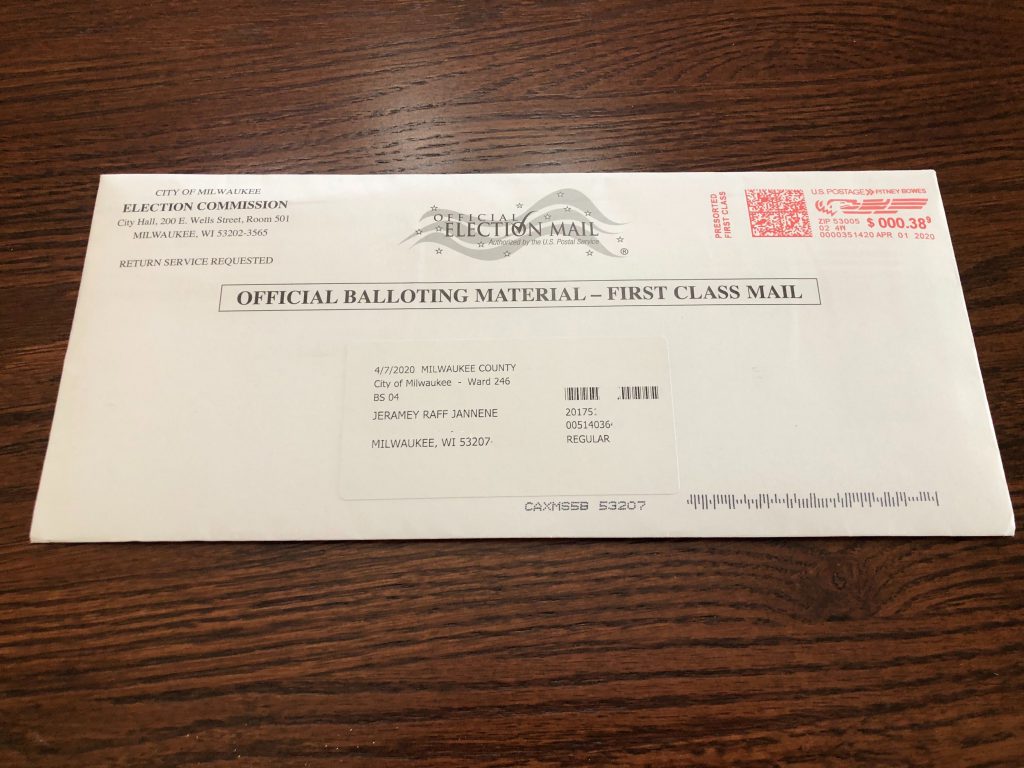Fighting to Make Voting Easier
Increasing absentee ballots will be good for democracy.
The fight to make voting easier in November in Wisconsin is well under way.
Last week, voting rights groups in Wisconsin won an important victory when the Wisconsin Elections Commission voted unanimously to send out absentee ballot request forms to 2.7 million voters in the state.
No one in Wisconsin should ever again be forced into the horrible choice that Speaker Robin Vos and Majority Leader Scott Fitzgerald put them in on April 7: the choice of sacrificing your right to vote or risking your life when you go to vote.
People should have safe and secure options in November, and that’s what the absentee ballot provides.
The Wisconsin Elections Commission is split on partisan lines, with three commissioners appointed by Democrats and three appointed by Republicans. So the Republican appointees could have blocked it, but didn’t.
Commissioner Bob Spindell, a Republican, said mailing the absentee ballot applications was “good for both the Republicans and the Democrats.”
It’s certainly good for democracy. And it should increase turnout across the board. In 2016, turnout in the Presidential race was the lowest since 2004. It was only 67% in 2016, compared to 70% in 2012.
It’s been Republican strategy for 40 years to suppress the vote. Back in 1980, Paul Weyrich, a leading social conservative, spoke before a large gathering of the religious right and he was blunt, too: “I don’t want everybody to vote. As a matter of fact, our leverage in the elections, quite candidly, goes up as the voting population goes down.”
The effort to suppress the vote continues in Wisconsin.
The Wisconsin Supreme Court is rehearing the “voter purge” case brought by the rightwing Wisconsin Institute of Law and Liberty, which seems to be filing a lawsuit almost every week to limit the franchise. If the group prevails, the Wisconsin Elections Commission will be compelled to purge 129,000 voters from the rolls, and those voters are disproportionately from student areas and from communities of color.
Fortunately, a lot of voting rights groups are trying to expand the vote.
The League of Women Voters of Wisconsin is intervening in the “voter purge” case and has filed other voting rights lawsuits.
Common Cause in Wisconsin has a federal lawsuit challenging the Voter ID law on the grounds that it denies students equal protection by forcing them to jump through more hoops than other voters.
The ACLU and a group called All Voting Is Local are working to make sure the 12,500 Wisconsin voters who are in jail have access to the ballot. They and the Center for Secure and Modern Elections, Disability Rights Wisconsin, and the Voting Rights Lab are also working to expand voting rights here in other areas.
And lots of groups – including the Alliance for Climate Education, BLOC (Black Leaders Organizing for Communities), Commonground, Freedom, Inc., the League of Women Voters, LIT (Leaders Igniting Transformation,) Souls to the Polls, Voces de la Frontera, Wisconsin Anti-Violence Effort, Wisconsin Conservation Voices and Wisconsin Voices, among others – are doing voter registration and get out the vote efforts.
All of these efforts, along with the polarizing president, should help push the turnout in Wisconsin up over the 70% mark, which is where it belongs.
Matt Rothschild is the executive director of the Wisconsin Democracy Campaign.
Reprinted with permission of Wisconsin Examiner.
Op-Ed
-
Unlocking Milwaukee’s Potential Through Smart Zoning Reform
 Jul 5th, 2024 by Ariam Kesete
Jul 5th, 2024 by Ariam Kesete
-
We Energies’ Natural Gas Plans Are A Mistake
 Jun 28th, 2024 by John Imes
Jun 28th, 2024 by John Imes
-
Milwaukee Needs New Kind of School Board
 Jun 26th, 2024 by Jordan Morales
Jun 26th, 2024 by Jordan Morales





















